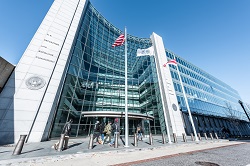Asset managers of all stripes have pushed ESG investments, and investors continue to gobble them up. According to Morningstar, there are now more than 580 ‘sustainable’ open-ended funds and ETFs in the US – well more than five times the number a decade ago – with more than 190 of those launched in 2020-2021. The combined assets of US sustainable funds are now almost $300 bn, three times greater than at the end of 2018.
But as with foods labeled ‘organic’, many of those investors have only vague ideas of what it means for a fund to be labeled ‘ESG’. The common understanding among retail investors is that ‘ESG investing’ constitutes ‘doing well by doing good’, ‘making money while saving the planet’ and other catchphrases that generally characterize impact investing but not the bulk of what is being branded as ESG.
The ESG investment industry has grown rapidly in both volume and scope, and it has done so in an uncontrolled way that works to the detriment of consumers. A big part of the problem is the overuse of terms such as ‘ESG’, ‘sustainable’, ‘clean’, ‘green’, ‘ethical’ and ‘socially responsible’. Today, there is a great monetary incentive for those in the ESG investment industry to use one or more of these terms in the sales and marketing of investment products, but there is little incentive to clarify why and how those terms are being applied. Ambiguity breeds opportunity.

Just the other day, I learned about a fund with ESG in its name, but not much else. From the generic and bland nature of the name, I gathered it was a growth fund that kept a low-risk profile and analyzed individual companies using garden-variety ESG factors, ratings and disclosure practices, in addition to traditional financial measures and risk factors.
I found a copy of the most recent fund prospectus. It started with a statement of the fund’s investment objective, which confirmed that the fund was about low-risk growth, but surprisingly said nothing about ESG. After a very clear explanation of fees, expenses and turnover, the prospectus provided an overview of the fund’s principal investment strategies. Here I learned that most of the fund’s assets would stay in bonds.
Now having the idea that this was a ‘green bond’ fund, I kept reading for the ESG part. When I got to it, I saw that this fund was only partially about being green. The disclosure explained that the fund screened out oil, gas & coal, guns, booze, cigarettes, gambling and adult magazines. It was now clearer to me why this was called an ESG fund, but pretty far from what I had originally assumed.
And then I spotted something I really wasn’t expecting, and I doubt most people would be: a statement that the fund steered clear of any company in the healthcare space that was in a line of business connected to contraception, abortion or stem-cell research. To be clear, the fund manager has done nothing wrong by SEC rules, and many other funds have similar disclosures. But this highlights the need for regulatory change.
SEC plans
In May, the SEC voted to propose two new sets of rules taking aim at misleading ESG fund names and disclosures. The mission of the SEC is to ‘protect investors; maintain fair, orderly and efficient markets; and facilitate capital formation’, so jumping into the ESG fund fracas is exactly what it should be doing. Given that the fund I just described has been out there since the prehistoric days before Steve Jobs invented the iPhone, these SEC rules are long overdue.
The SEC’s proposed rules take the right approach by forcing ESG funds to explain their terminology and methodology and to outline the key ESG elements in an easy-to-read table at the front of the fund prospectus. The proposed rules attempt to define some terms (for example, ‘ESG engagement meeting’) and not others (for example, ‘ESG’) and classify the different types of ESG funds, such as ‘integration’, ‘focused’ or ‘impact’. The rules would also require funds to disclose how they use ratings, voting and engagement on ESG. In the proposing release, the SEC asks for relevant data and constructive feedback from the industry.
As is to be expected, the SEC’s proposals don’t get it completely right, and there are portions that are making some people applaud and others squirm. During the comment period, which officially ended on August 16, many knowledgeable parties weighed in to help the SEC get the final rules closer to what would be an appropriate compromise.
The commercial opportunity created by ambiguity in ESG investing will continue to grow and, without regulatory involvement, market actors will take advantage of such ambiguity unchecked. The SEC has taken the first steps to create some much-needed semblance of order and structure within today’s chaos and noise in the ESG investment industry.
Douglas Chia is president of Soundboard Governance
Editor’s note: The fund referenced in the column is managed by PIMCO. A PIMCO spokesperson says in a statement: ‘The exclusion of issuers that derive revenues from abortion, abortifacients, contraceptives and stem-cell research has been a consistent factor in the investing approach of PIMCO’s Total Return ESG and Low Duration ESG funds since they were both launched in the 1990s as socially responsible investments for faith-based investors. The exclusion is not a firm-wide ESG policy and doesn’t reflect PIMCO’s views on abortion or related rights, but rather, was driven by a client preference with respect to only these two funds.’










